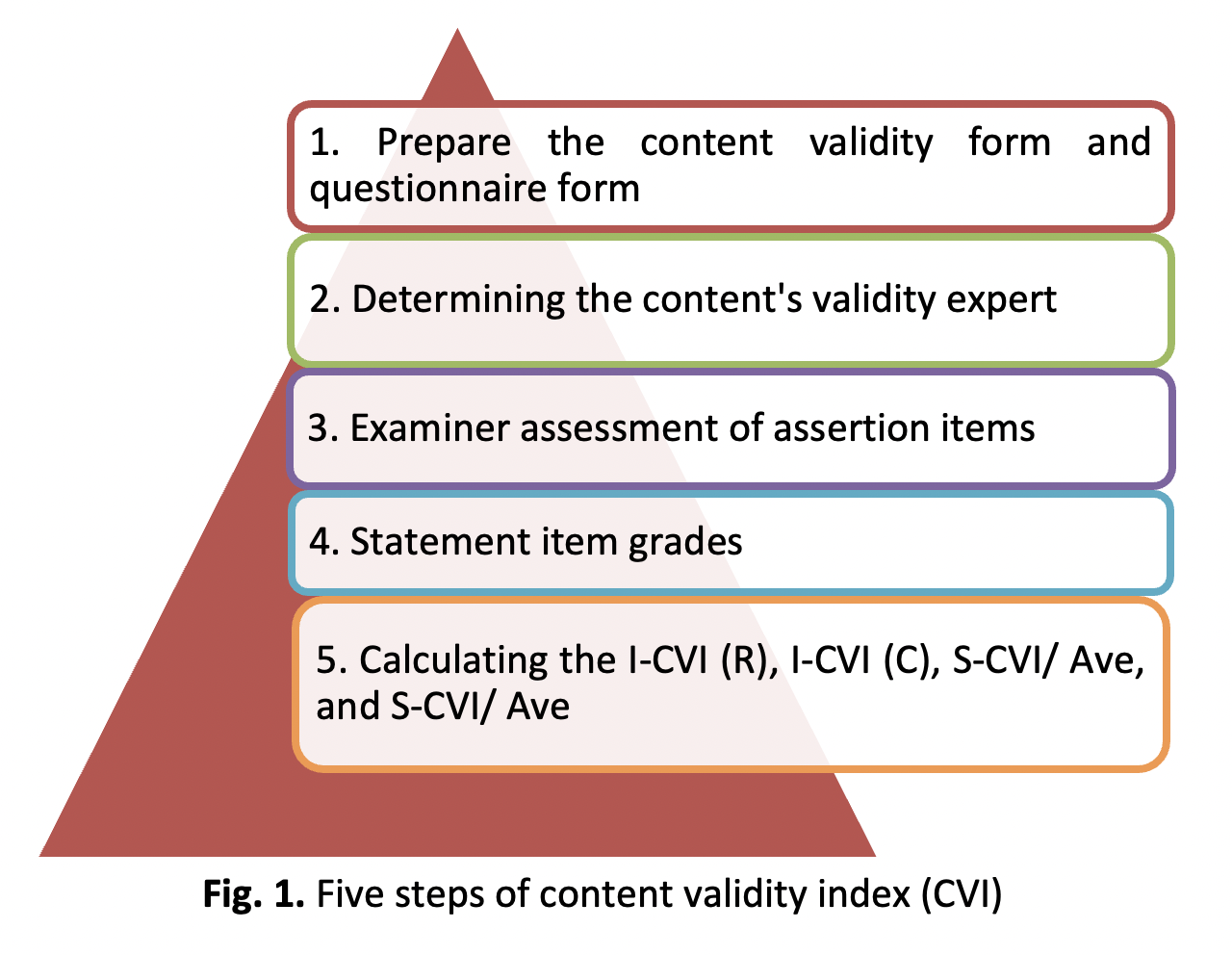Enhancing Content Validity of the Designed Hierarchy of Controls Instrument in Preventing Infectious Diseases on Construction Sites: A Multidimensional Approach
DOI:
https://doi.org/10.37934/araset.32.2.508521Keywords:
Content validity index, Kappa statistics, Questionnaire design, Hierarchy of controls, Preventing infectious diseases, Construction siteAbstract
The study aims to examine the content validity index (CVI) and Kappa statistics (K) with the Hierarchy of Controls instrument, which was made to reduce the risk of spreading infectious diseases on construction sites. The examination of validity that the investigation will assess will involve the item-level ICV (I-CVI), scale-level CVI (S-CVI), Probability of chance agreement (P_c), and Kappa value (K). The study employs a questionnaire evaluation form frequently used in quantitative research to gather data. Hence, the process of developing a research instrument that guarantees the accuracy of data necessitates the validation of a questionnaire. A panel of six experts in the field has been invited to offer suggestions to improve the questionnaire’s validity. The instrument comprises a total of 36 items, which are divided into two distinct categories. All products within the two domains had an I-CVI of 0.67 to 1. In planning, implementation, and evaluation, the average score for relevance and clarity on the S-CVI was 0.94, which exceeded 0.80, indicating a strong content validity of the items. Consequently, the designed questionnaire is deemed suitable for implementation in an actual research investigation. Nevertheless, it is recommended that additional face validity assessments and pilot studies be conducted to test the instrument’s validity, reliability, and usability. Hence, it is imperative to ensure that the development and validation validity processes are diligently conducted in order to effectively implement preventive measures against infectious diseases at the designated site.
Downloads





























